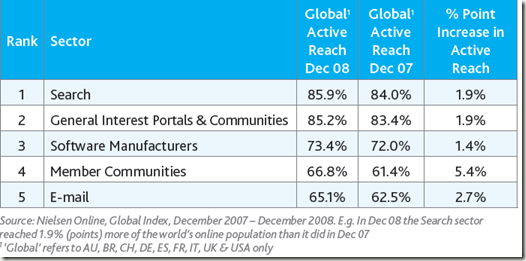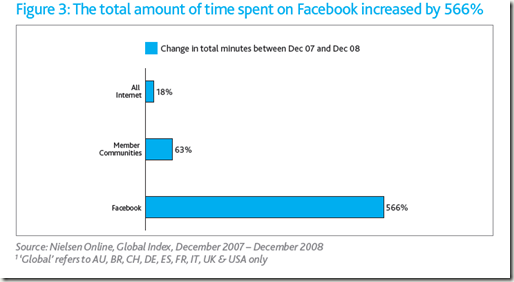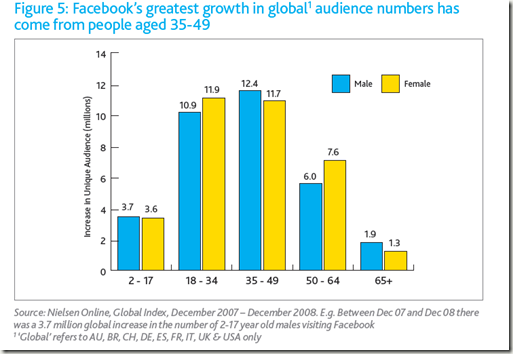
According to Sharon Gaudin of Computerworld, a recent study shows that social networks for middle-agers (that’s most of us reading this article) are now a more popular form of communication than email.
I remember that just a few years ago many Christians, including Christian school administrators and teachers, viewed social networks as the exclusive domain of teenagers or were immoral, or both and therefore should or could be ignored. Such a perspective was a mistake then and is a mistake now. Social networks are a form of communication and social interaction. Social networks are neither inherently good nor inherently evil. HOW they are used determines their value.
According to a report by Nielsen Online (download PDF), social networks are used by two-thirds of all worldwide online users. Social networks and blogs have become the fourth most popular online products. The report lists e-mail as No. 5 on the list of users' favorite online tools. Search tools, portals and PC software topped the list.

Other highlights of the report include:
- Putting the growth of social networks – popularity and engagement – into context
- How the audience to social networks is changing
- The challenges facing advertisers on social networks
- What advertisers can do to find the magic formula for advertising in social networks
- Factors contributing to the Facebook phenomenon
- Why localization has won the day in many countries
- Where mobile social networking has taken the greatest hold
- What ‘traditional’ publishers can do in the face of the social network phenomenon
Mind Share
“Of the social networking sites out there, Twitter and Facebook seem to have the lion's share of the mind share these days. And Facebook has the lion's share of the market share, as well. In January, online researcher comScore Inc. reported that Facebook, once thought of as the up-and-coming social network, had overshadowed rival MySpace, with nearly 222 million unique visitors in December compared to 125 million for MySpace.
To back up comScore's numbers, Facebook CEO Mark Zuckerberg noted in a January blog post that the social networking site had hit a big milestone -- 150 million active users, nearly half of whom use the network daily.”
Neilson’s report also shows the significant increase in the time spent on Facebook:

In all the markets that the company tracks, Facebook is visited monthly by three of every 10 people online.
Our Parents and Prospective Parents are on Facebook
THE MOST SURPRISING FINDING OF THE REPORT is that Facebook’s greatest growth in global audience numbers has come from people aged 35-49! Social networks aren’t just for the teenage set anymore.

This is the prime child rearing, school selecting age of the population!
Should We Use Facebook and Other Social Networks to Connect with Parents?
Frankly, I don’t know the answer to that question but I am researching the issue because I believe we should try. Here are some of the issues to consider.
Our Mindset/Mental Model Must Change
Traditional advertising is one-way communication—the message is pushed or placed in front of the intended customer.
Social networks by definition are SOCIAL and therefore the “advertising” must be a conversation. According to Nielson, “the point that social network members are co-creators of content and, therefore, have a sense of ownership within the site means advertising should be about participating in a relevant conversation with consumers rather than simply pushing ads on them. After all, it is social media. Advertising shouldn’t be about interrupting or invading the social network experience, it should be part of this conversation.”
This two-way conversation presents opportunities and problems.
Positively, it provides a framework for engaging in authentic conversations about education, Christian education, and our schools. Facebook, for example, is a wonderful way to provide helpful information to current and prospective parents.
Negatively, we run the risk of false accusations and unjustified negative comments being made by disgruntled individuals. The social network, if not managed well, could also foster gossip and slander.

In other words, promoting our schools through social networks can be a two-edged sword.
“Messaging within advertising should come from a more authentic, candid and humble perspective.
Social media has, once again, brought word of mouth to the fore as the ultimate form of advertising at a time when traditional advertising is suffering from a major lack of trust.
Nielsen’s analysis of social media conversations back in 2007 and again in December 2008 showed that ‘false’ was the term most closely associated with “advertising”.
Social media has fanned the flames of consumer distrust about advertisers claims. However, at the same time social media has provided the motive, opportunity
and means for advertisers to engage consumers in a more open and honest way.”
Building Trust and Friendships with Parents?
The report goes on to note that “social networks are ultimately about friendships, where members add value to each other’s lives through interaction. Therefore, advertising should follow the same philosophy of adding value through interaction and consultation. Fan sites or sponsored groups are, perhaps, one of the ore successful examples of social network marketing that touch on the principles of interactivity and adding value …
However, the challenge for advertisers is that discussions within these groups won’t necessarily align itself with the brand-designed messaging. Much like a friendship, marketing on social networks requires continual investment – in terms of time and effort as opposed to financial – to be of value to both parties.”
In other words, some of the conversation on a Facebook fan page for our school will not reflect the message that we are trying to communicate. Some of the comments posted by participants may be blatantly false. Although this presents a significant problem, it also presents an opportunity—an opportunity to correct false information, rumors, and gossip and to share positively the philosophy and impact of Christian schooling. Doing so of course requires that someone from the school be fully engaged with the Facebook site.
What Do You Think?
- Does your school have a Facebook presence? If so, why? If not, why not?
- If your school has a Facebook presence, how has it worked? Has it been a net positive experience or a negative one?


 Duct Tape Marketing
Duct Tape Marketing



